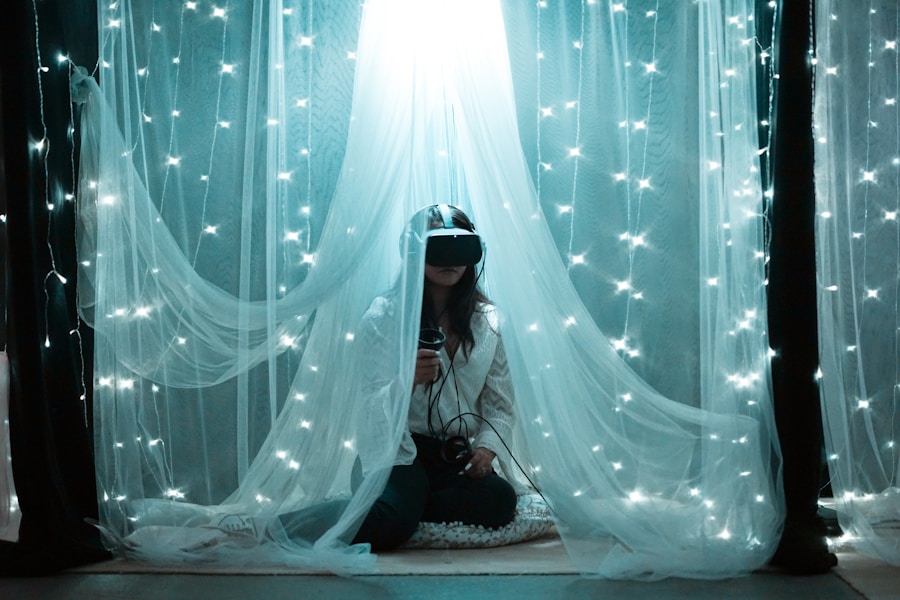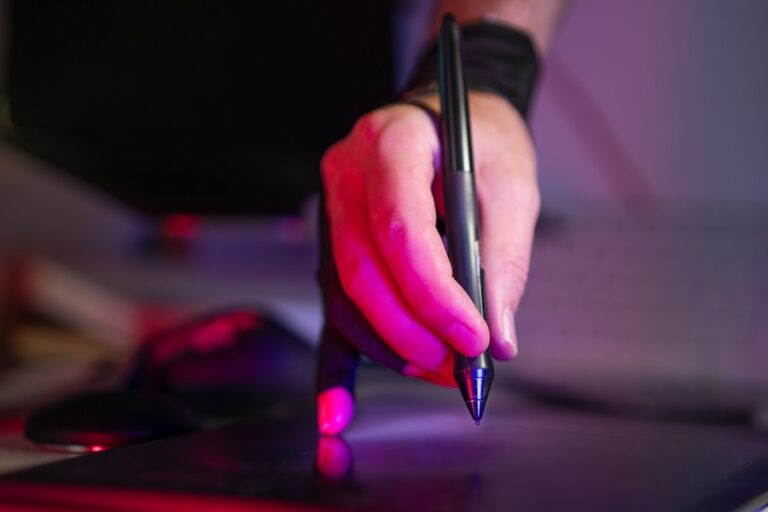Barking Up the Right Tree: Tips and Tricks for Mastering Digital Art of Dogs
When it comes to creating digital art of dogs, choosing the right reference photo is crucial. The reference photo will serve as the foundation for your artwork, so it’s important to select a high-quality image that captures the essence of the dog you want to depict. Look for a photo that has good lighting, clear details, and a pose that showcases the dog’s personality. Pay attention to the dog’s expression, body language, and overall appearance to ensure that you capture its unique characteristics in your artwork. Additionally, consider the composition of the photo and how it will translate into your digital art. A well-chosen reference photo will make the process of creating digital dog art much easier and more enjoyable.
When selecting a reference photo, it’s also important to consider copyright and usage rights. If you’re using a photo that you didn’t take yourself, make sure you have permission to use it for your artwork. There are many websites that offer royalty-free or creative commons images that you can use for reference, but always double-check the usage rights to avoid any legal issues. Taking your own reference photos is another great option, as it allows you to capture the exact pose and expression you want for your artwork. No matter where you source your reference photo from, taking the time to choose the right one will greatly impact the quality of your digital dog art.
Understanding Dog Anatomy
Understanding dog anatomy is essential for creating realistic and accurate digital dog art. Familiarizing yourself with the basic structure of a dog’s body, including its skeletal and muscular systems, will help you accurately depict the proportions and movements of the dog in your artwork. Pay attention to the different breeds of dogs and how their anatomy varies, as this will influence the way you portray them in your digital art. Study the way dogs move and interact with their environment, as this will help you capture their natural behavior and expressions in your artwork. Additionally, learning about the specific features of different dog breeds, such as ear shape, tail length, and coat texture, will allow you to create more detailed and realistic digital dog art.
There are many resources available to help you understand dog anatomy, including books, online tutorials, and anatomy references specifically tailored to artists. Take the time to study these resources and practice drawing the basic structure of a dog’s body before diving into more complex digital art projects. By developing a solid understanding of dog anatomy, you’ll be better equipped to create digital dog art that is both visually appealing and anatomically accurate.
Mastering Fur Textures and Colors
Mastering fur textures and colors is an important aspect of creating realistic digital dog art. Dogs come in a wide variety of coat textures and colors, so it’s important to study and understand these variations in order to accurately depict them in your artwork. Pay attention to the way light interacts with different fur textures, as this will influence how you render fur in your digital art. Experiment with different brush settings and techniques to create realistic fur textures, such as using varying brush sizes and opacity levels to mimic the look of individual hairs. Additionally, understanding color theory and how it applies to fur colors will help you accurately portray the unique coat patterns and markings of different dog breeds in your digital art.
When mastering fur textures and colors, it’s important to study real-life references of dogs with different coat types. Take note of the way light reflects off of smooth coats, the depth and volume of curly or wavy fur, and the patterns and colors of dogs with unique coat markings. By observing these details and practicing rendering fur in your digital art, you’ll be able to create lifelike depictions of dogs that capture the beauty and complexity of their fur textures and colors.
Utilizing Digital Brushes and Tools
Utilizing digital brushes and tools is essential for creating detailed and expressive digital dog art. There are a wide variety of brushes available in digital art software that can be used to mimic different traditional art mediums, such as pencils, charcoal, watercolors, and oil paints. Experimenting with different brush settings and textures will allow you to create unique effects in your digital dog art, such as adding depth and dimension to fur textures or capturing the subtle details of a dog’s expression. Additionally, utilizing tools such as layers, masks, and blending modes will give you greater control over the composition and visual elements of your artwork.
When utilizing digital brushes and tools, it’s important to take the time to familiarize yourself with the capabilities of your chosen digital art software. Many programs offer customizable brush settings that allow you to create brushes tailored to your specific artistic style and needs. Take advantage of these features to develop a set of brushes that work best for rendering fur textures, capturing expressions, and adding details to your digital dog art. By mastering the use of digital brushes and tools, you’ll be able to create artwork that is both visually stunning and technically proficient.
Adding Depth and Dimension to Your Art
Adding depth and dimension to your digital dog art is essential for creating a sense of realism and visual interest. Pay attention to the way light interacts with different surfaces in your artwork, such as the sheen of a dog’s coat or the glint in its eyes. Experiment with shading and highlighting techniques to create depth in your artwork, using varying levels of contrast and opacity to mimic the way light falls on different parts of the dog’s body. Additionally, consider the use of atmospheric perspective to create a sense of depth in your artwork, such as adding subtle blurring or desaturation to background elements to create a sense of distance.
When adding depth and dimension to your art, it’s important to consider the overall composition and focal points of your artwork. Use techniques such as overlapping shapes, size variation, and perspective to create a sense of space and depth in your digital dog art. Pay attention to the way different elements interact with each other within the composition, such as how the dog’s body relates to its environment or how its expression draws the viewer’s eye. By carefully considering these elements and applying techniques for adding depth and dimension, you’ll be able to create digital dog art that is visually compelling and immersive.
Capturing Expressions and Emotions
Capturing expressions and emotions is a key aspect of creating engaging and relatable digital dog art. Dogs are known for their expressive faces and body language, so it’s important to pay close attention to these details when depicting them in your artwork. Study real-life references of dogs in different emotional states, such as happiness, curiosity, fear, or contentment, in order to understand how their expressions change based on their mood. Pay attention to subtle details such as ear position, eye shape, mouth movement, and overall body posture when capturing expressions in your digital dog art.
When capturing expressions and emotions in your art, it’s important to consider the overall narrative or message you want to convey through your artwork. Think about what story or feeling you want to evoke in the viewer when they look at your digital dog art, and use techniques such as composition, color choice, and lighting to enhance the emotional impact of your artwork. Additionally, consider how different elements within the composition can contribute to conveying the dog’s emotions, such as using background elements or other animals to create context for the dog’s expression. By paying close attention to these details and applying techniques for capturing expressions and emotions, you’ll be able to create digital dog art that resonates with viewers on an emotional level.
Putting the Finishing Touches on Your Digital Dog Art
Putting the finishing touches on your digital dog art is an important step in refining and polishing your artwork. Pay attention to details such as texture refinement, color adjustments, and overall composition balance when finalizing your artwork. Use techniques such as sharpening edges, adding highlights or glazes, or adjusting color balance to enhance the visual impact of your digital dog art. Additionally, consider how different elements within the composition can contribute to conveying the dog’s emotions, such as using background elements or other animals to create context for the dog’s expression.
When putting the finishing touches on your art, it’s important to take a step back from your work periodically in order to gain fresh perspective on what adjustments need to be made. Consider seeking feedback from other artists or peers in order to gain valuable insights on how you can improve your artwork before finalizing it. By carefully considering these details and applying techniques for putting finishing touches on your digital dog art, you’ll be able to create artwork that is visually stunning and emotionally resonant.
In conclusion, creating digital dog art is a rewarding endeavor that requires careful attention to detail, technical skill, and artistic vision. By choosing the right reference photo, understanding dog anatomy, mastering fur textures and colors, utilizing digital brushes and tools, adding depth and dimension to your art, capturing expressions and emotions, and putting finishing touches on your artwork, you’ll be able to create digital dog art that is both visually stunning and emotionally resonant. With practice and dedication, you can develop your skills as a digital artist and create captivating depictions of man’s best friend that resonate with viewers on an emotional level.






